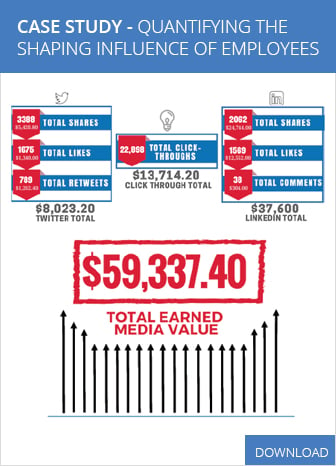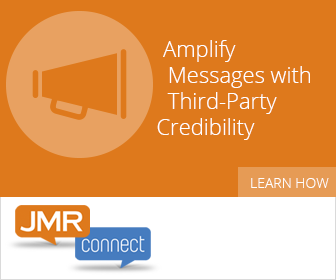Strategies for Driving Technology Change Initiatives
Speaker of the House Sam Rayburn used to tell members of Congress, “If you want to get along, you have to go along.”
In other words, when you’re trying to persuade colleagues to change, you need to persuade them. You have to offer honey, not vinegar.
Buy-in is critical to making organizational change happen, especially when you’re building support for a new technology initiative, such as implementing an enterprise content management system. However, the reality of change is that often you have to persuade people who don’t work for you to work for you, and that can be hard when you have no authority over them. That’s where indirect influence comes into play.
Here are three tips for developing indirect influence that will help your technology initiative gain traction.
Let Executives Model the Way
If you’ve gotten to the point of onboarding peers and colleagues, chances are executive management sees the value in your project and has already approved the decision to move forward. It’s important to harness this executive buy-in to show others that this is a strategic decision for the organization. While—in the best case—your peers may like and respect you, they might not see your project as important or urgent. If their boss and their boss’s boss, however, are talking about the project and how excited they are about it, it’s likely that users are going to understand the organization’s commitment to the initiative.
Leadership starts at the top, and we need this philosophy to trickle down. Try to get the executives to model the way—if they can share how they’re going to use the new technology and even potentially show others how they’re using the system, it will help others buy in, too.
But executive buy-in doesn’t have to be a cold directive. For example, one county in New York purchased electronic records management software and was working on a project to scan documents from all county departments into the system. Since some people were hesitant to give up their paper, the county clerk made neon T-shirts that said, “Ask me how we’re saving money!” for leadership to wear while they collected documents. These shirts were a physical reminder that electronic records management was a strategic project with important benefits for the entire county, and that leadership was unified behind this effort.
Engage with Your Colleagues
It’s great to say that we want to use technology to improve processes in our organization, but what does an automated accounts payable process really mean for an AP clerk who has to process purchase orders on a daily basis? A department manager who has to approve them? The CFO who needs oversight over the entire process to make sure corporate policies are being followed?
We can help others see what this project entails—as well as the impact it has—by posing real-life scenarios of what daily life will look like after the project is complete. Pick a few activities that everyone dreads, select a few common pain points, and then share how the project will stop these headaches.
For example, with accounts payable, perhaps those pain points are filing papers or approving requests. In this case, replacing paper forms with electronic ones—which can be automatically filed in an electronic repository—eliminates manual document filing and prevents approvals from falling through the cracks, ensuring that corporate standards are adhered to.
As a change leader, it’s your job to help others in your organization to actually visualize what their future will look like after the technology has been implemented. The hardest part of this can be putting yourself in someone else’s shoes, but active listening can help all parties involved navigate this change.
When you’re trying to get people on your side, genuine listening is a valuable step: It builds relationships, ensures understanding and resolves conflicts. To brush up your listening skills, try:
- Active listening. Make eye contact, sit facing forward and put your phone away.
- Adjusting your pace to match your conversational partner. If you’re a quick talker, it can be a struggle to slow down for a slower communicator, but it will make him feel more comfortable.
- Waiting for a pause to ask clarifying questions. Rather than interrupting, wait for a natural pause, and make sure your questions are only to ensure understanding—not to shift the conversation to where you would like it to go.
Provide a Runway for Onboarding
Often, technology systems allow you to set up a demonstration environment or test system. Creating a test environment allows users to test out how exactly the solution will work without worrying about breaking something or accessing confidential information.
As people begin to explore the new system, you want to provide a runway for onboarding. Start by breaking down the transition to the new system in steps. Train users on bite-sized pieces of the system and give them time to adjust before moving on. For example, many customers implementing electronic records management will scan documents into their new system, but keep the paper files for a few weeks. That way, people still have a safety net if they’re struggling to adapt. Start by scanning archived files and showing your colleagues how to access them, then later have the discussion about how to handle active documents and incoming content.
Eventually, you’ll need to start moving people over to the new process and system, so set reasonable timelines for switching over. With the team, pick out which activities you want to adopt first. This will likely correlate to the steps you’ve identified in your onboarding plan. Then, set clear expectations on what will be happening, and schedule a time to switch.
By giving people room and time to experiment in “sandboxes,” staged adoption, and planned stop/start, we’re able to let the skeptics come to terms with what’s happening without being forceful and rigid. People appreciate that you’ve taken the time to consider what they will need to change, and are conscientious in the way that you’re handling the transition.
The truth is that we like people who like us—and we work harder for people we like. It might sound small, but smiling, addressing colleagues by their names and saying “good morning” go a long way. And often, creating indirect influence to manage change around a technology initiative boils down to just that: focusing on the positive, thinking of others and giving them your full attention.
Melissa Henley is Director of Marketing Communications and Katie Burke is Senior Government Program Strategist for Laserfiche, an enterprise content management software company which provides intuitive solutions for capture, electronic forms, workflow, case management, cloud, mobile and government-certified records management.
Edited by Stefania Viscusi











